Vietnamese cuisine is renowned for its vibrant flavors, aromatic herbs, and fresh ingredients. The traditional dishes of Vietnam offer a harmonious blend of flavors, making them not only delicious but also a healthy choice. In this article, we will explore the health benefits of Vietnamese food and how it can contribute to your overall well-being.
Traditional Vietnamese Cuisine
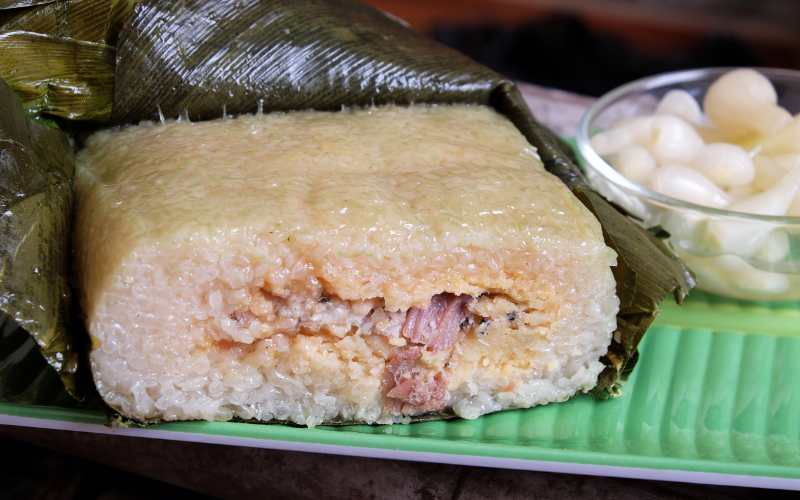
Traditional Vietnamese cuisine is known for its exceptional use of fresh ingredients, balanced flavors, and nutrient-rich staples. This culinary tradition showcases the essence of Vietnamese culture and is celebrated worldwide for its unique and tantalizing dishes.
The foundation of Vietnamese cuisine lies in the emphasis on using fresh ingredients. Locally sourced produce, herbs, and spices take center stage in every dish. From aromatic lemongrass and pungent fish sauce to vibrant cilantro and fiery chili peppers, these ingredients add depth and complexity to Vietnamese recipes.
Balanced flavors are a hallmark of Vietnamese cooking. Each dish aims to achieve a harmonious blend of sweet, sour, salty, and spicy elements. The interplay of these flavors creates a symphony of taste sensations that dance on the palate. Whether it’s the delicate sweetness of caramelized fish sauce in a clay pot dish or the refreshing tang of lime in a bowl of pho, Vietnamese cuisine never fails to deliver a well-balanced flavor profile.
Moreover, Vietnamese cuisine revolves around nutrient-rich staples. Rice, noodles, and an array of vegetables form the backbone of many traditional dishes. Rice, particularly jasmine rice, is a staple in Vietnamese households and is commonly enjoyed alongside various protein-rich dishes and flavorful stir-fries. Noodles, such as rice noodles and egg noodles, are widely used in iconic dishes like pho and bun cha. These staples provide sustenance, essential nutrients, and a satisfying texture to Vietnamese cuisine.
Benefits of Vietnamese Food
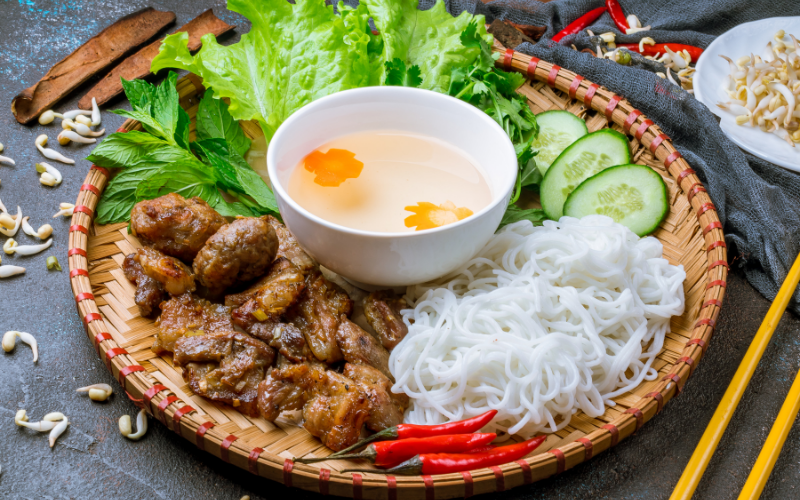
Low in Fat and Cholesterol: Vietnamese dishes are generally low in fat and cholesterol. The cuisine emphasizes the use of minimal oil and steaming or stir-frying techniques, resulting in lighter and healthier meals. This makes Vietnamese food an excellent choice for individuals aiming to reduce their fat intake or maintain a healthy weight.
Abundance of Vegetables and Herbs: Vietnamese cuisine places a strong emphasis on vegetables and herbs. A wide variety of fresh vegetables like lettuce, bean sprouts, cucumbers, and herbs like mint, basil, and coriander are integral components of many dishes. These ingredients are packed with essential vitamins, minerals, and dietary fiber, promoting overall health and well-being.
High in Fiber: Vietnamese cuisine incorporates fiber-rich ingredients like vegetables, legumes, and whole grains. Dietary fiber is crucial for a healthy digestive system, aiding in proper digestion and preventing constipation. Additionally, a high-fiber diet helps control blood sugar levels, promotes satiety, and supports weight management.
Balanced Macronutrients: Vietnamese meals are typically well-balanced, comprising a combination of carbohydrates, proteins, and fats. The inclusion of rice or noodles as a staple provides a source of energy in the form of complex carbohydrates. Protein is derived from various sources such as lean meats, seafood, tofu, and legumes, ensuring an adequate intake for muscle growth and repair. Healthy fats are often derived from vegetable oils or natural sources like nuts and seeds.
Promotes Healthy Digestion: Vietnamese cuisine incorporates ingredients that promote healthy digestion. Herbs and spices like ginger, lemongrass, and mint have digestive benefits, reducing bloating and aiding in the breakdown of food. Additionally, fermented foods like kimchi and pickled vegetables, which are commonly enjoyed in Vietnamese cuisine, contain probiotics that support a healthy gut microbiome.
Popular Vietnamese Dishes That You Must Try
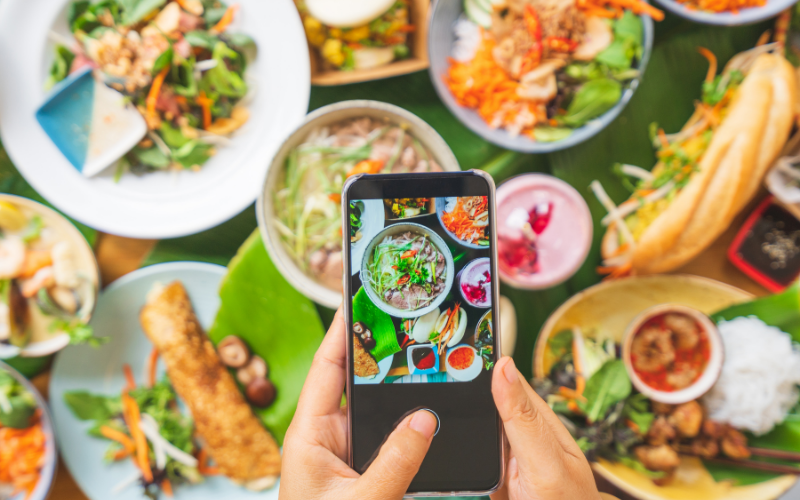
Vietnamese cuisine boasts a plethora of popular and mouthwatering dishes that have gained global recognition for their unique flavors and textures. Here are some beloved Vietnamese dishes that are celebrated worldwide:
- Pho: Pho is Vietnam’s iconic noodle soup that has gained immense popularity globally. This comforting dish features rice noodles immersed in a flavorful broth, often made from simmering beef bones or aromatic spices. Pho is typically garnished with fresh herbs, bean sprouts, lime, and chili, allowing diners to customize their bowl to their liking.
- Banh Mi: Banh Mi is a delectable Vietnamese sandwich that showcases the fusion of Vietnamese and French culinary influences. It consists of a crusty French baguette filled with various fillings such as savory grilled meats (commonly pork or chicken), pickled vegetables, cilantro, and a touch of spicy chili sauce. The combination of flavors and textures makes Banh Mi an irresistible street food favorite.
- Goi Cuon (Spring Rolls): Goi Cuon, also known as fresh spring rolls, are light and refreshing rolls filled with a variety of ingredients. Rice paper wrappers are filled with a combination of cooked shrimp, slices of pork, rice vermicelli noodles, fresh herbs, and lettuce. These rolls are often served with a dipping sauce, such as peanut sauce or a tangy fish sauce-based condiment.
- Com Tam (Broken Rice): Com Tam is a popular Vietnamese dish that features broken rice as its centerpiece. It is typically served with grilled pork chops, a steamed egg meatloaf known as “cha trung,” pickled vegetables, and a side of fish sauce. The dish offers a delightful combination of flavors and textures, with the tender grilled meat complementing the fragrant broken rice.
These are just a few examples of the many delicious Vietnamese dishes available. Other notable mentions include Bun Cha (grilled pork noodle salad), Banh Xeo (Vietnamese savory crepes), and Ca Kho To (caramelized fish in clay pot). Vietnamese cuisine offers a rich tapestry of flavors that caters to a wide range of tastes, making it a beloved and diverse culinary tradition.
Vietnamese Food and Weight Management
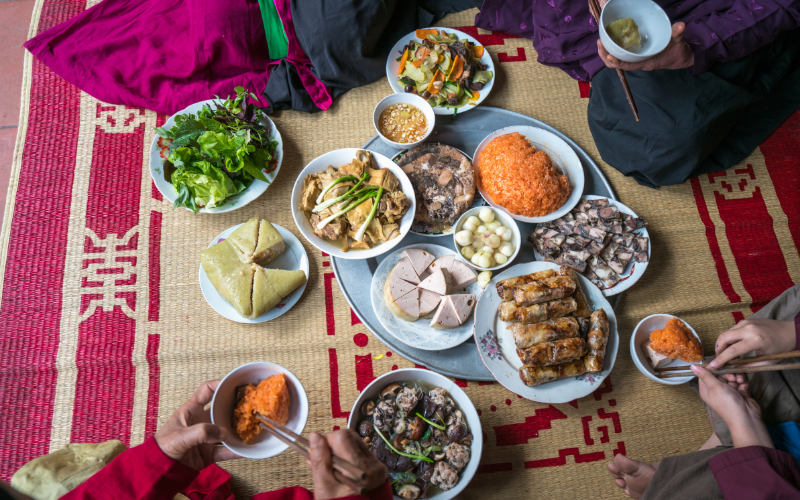
Vietnamese cuisine can be a healthy and supportive choice for weight management. Here are some ways in which Vietnamese food aligns with weight management goals:
- Portion Control: Vietnamese meals often consist of multiple components, including a main dish, rice or noodles, vegetables, and broth. This structure promotes portion control, as the various elements are served separately, allowing you to choose the amount of each component you consume. This can be beneficial for managing calorie intake and promoting mindful eating.
- Lightly Cooked and Steamed Dishes: Vietnamese cooking techniques often involve light cooking methods such as steaming, stir-frying, or boiling. These methods require minimal use of oil, resulting in lower calorie content compared to dishes that are deep-fried or heavily sautéed. By choosing these cooking methods, you can enjoy flavorful meals while minimizing unnecessary calories.
- Limited Use of Oils and Sauces: Vietnamese cuisine typically uses oils sparingly and incorporates a variety of herbs, spices, and natural flavors to enhance the taste of dishes. This reduces the overall fat content of meals and can contribute to weight management goals. Additionally, Vietnamese sauces like fish sauce and soy sauce are typically used in moderation, allowing you to control your sodium intake.
It’s important to note that while Vietnamese cuisine can support weight management, individual choices and portion sizes play a significant role. It’s always advisable to be mindful of overall calorie intake and choose a variety of nutrient-dense foods to maintain a balanced diet. Additionally, regular physical activity and a holistic approach to overall well-being are key components of successful weight management.
FAQs
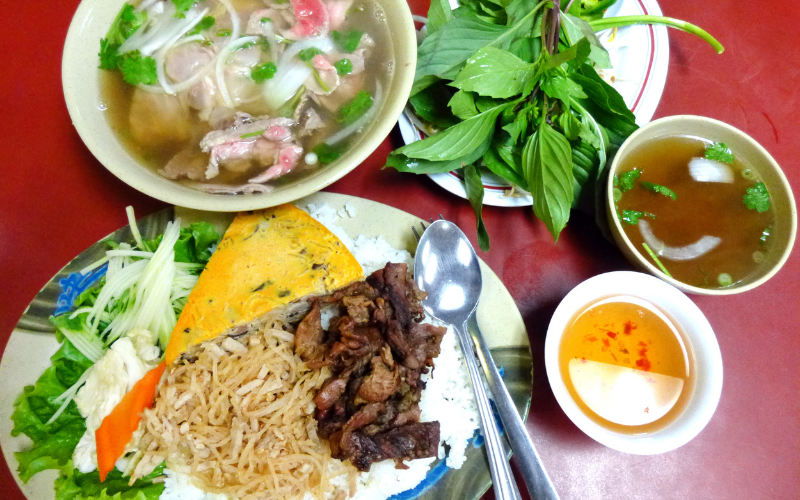
Is Vietnamese food suitable for vegetarians?
Yes, Vietnamese cuisine has many vegetarian options that include an abundance of vegetables, tofu, and plant-based proteins.
Can I find Vietnamese food outside of Vietnam?
Yes, Vietnamese cuisine has gained popularity worldwide, and you can find Vietnamese restaurants in many countries.
Does Vietnamese food contain a lot of spices?
Vietnamese cuisine uses a variety of herbs and spices, but the level of spiciness can be adjusted to personal preferences. Many dishes are mild and flavorful rather than excessively spicy.
Is Vietnamese food suitable for people with dietary restrictions?
Vietnamese cuisine offers a range of options suitable for various dietary restrictions, including vegetarian, gluten-free, and dairy-free diets. However, it’s essential to communicate your dietary needs to ensure proper preparation.
Is it OK to eat pho everyday?
While pho is a delicious Vietnamese dish, it’s not recommended to eat it every day. Pho is typically high in sodium and consuming it excessively may lead to health issues. A well-rounded diet includes a variety of nutrients from different food groups. While enjoying pho occasionally is fine, it’s important to incorporate a diverse range of foods for a balanced and healthy lifestyle.
How many calories does the average Vietnamese person eat?
On average, Vietnamese adults may consume around 2,000 to 2,500 calories per day, with some variations based on factors like activity level and individual metabolism. However, it’s important to note that this estimate can differ among individuals and is subject to personal preferences, dietary habits, and cultural influences.
Is Vietnamese food anti inflammatory?
Vietnamese cuisine often incorporates a variety of fresh ingredients, herbs, and spices, which can contribute to its potential anti-inflammatory properties.
Is Vietnamese food good for weight loss?
Vietnamese food can be a great choice for weight loss due to its focus on fresh ingredients, lean proteins, and balanced flavors. Vietnamese cuisine incorporates an abundance of vegetables, which are low in calories and high in fiber, promoting a feeling of fullness and aiding in weight loss.
Conclusion
Vietnamese food offers a delightful combination of flavors, textures, and health benefits. The emphasis on fresh ingredients, balanced flavors, and nutrient-rich staples makes it a healthy choice for individuals looking to maintain a well-rounded diet. From the famous Pho to the refreshing spring rolls, Vietnamese cuisine provides a plethora of options that are both delicious and nourishing.